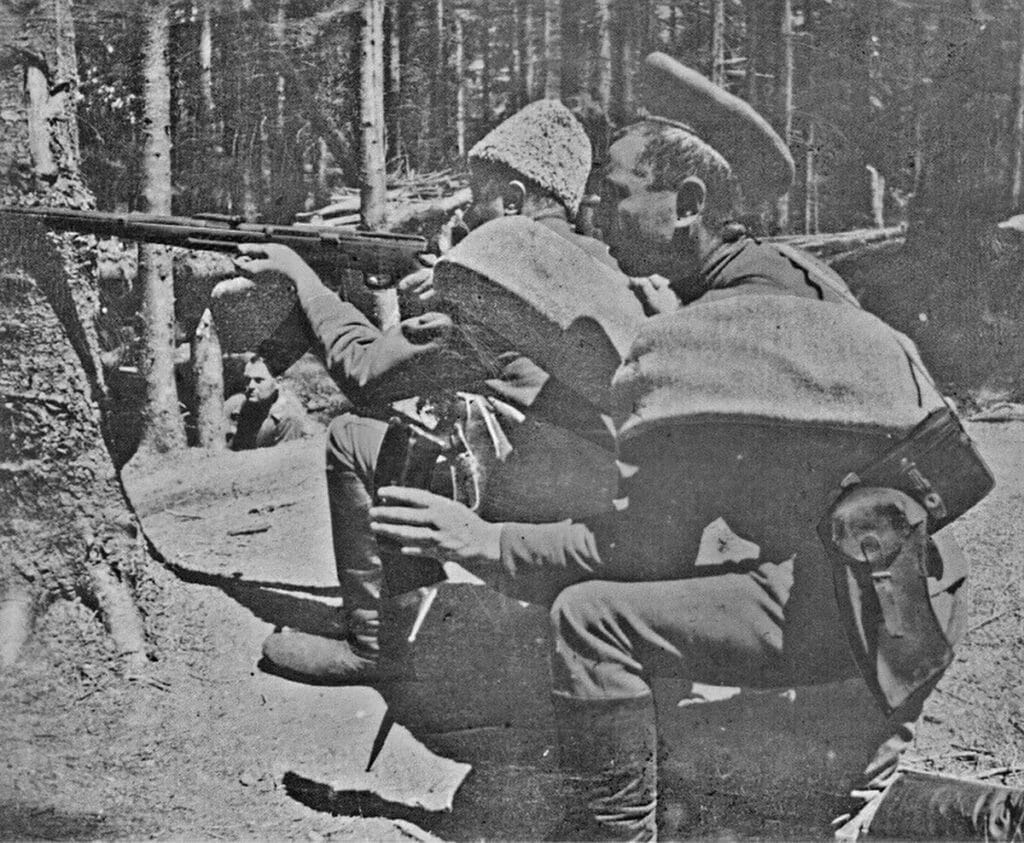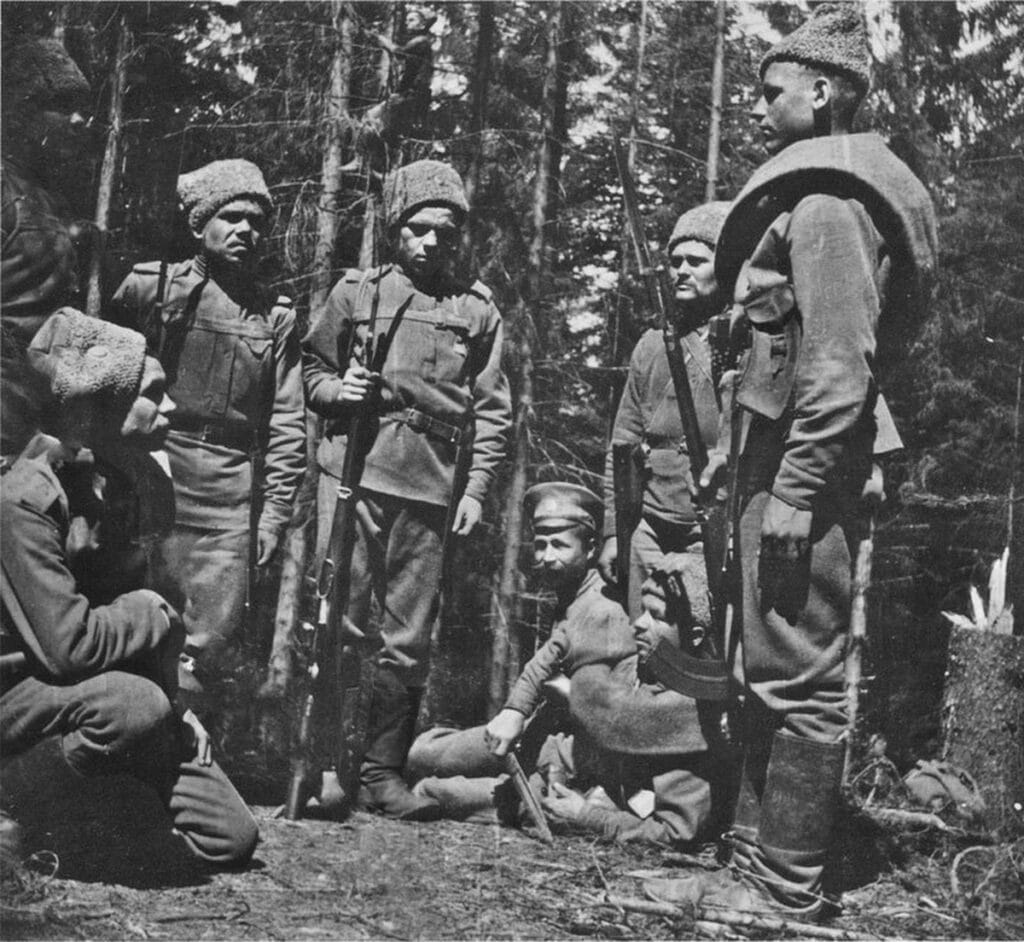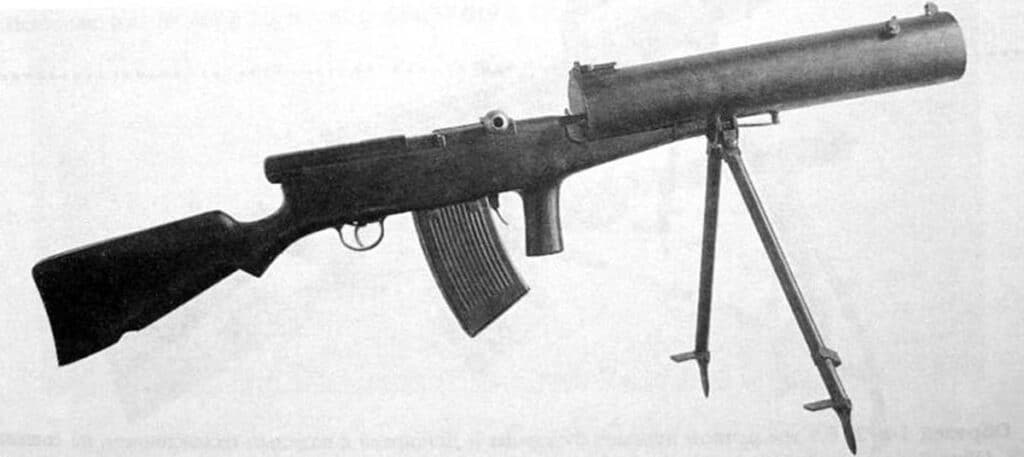Vladimir Grigoryevich Fedorov, born in 1874, would go on to create, disputedly, the first assault rifle in the world, the Fedorov Avtomat. Popularized by western media, many don’t know the real story behind this fascinating piece of engineering. It comes from an entire developmental lineage spanning decades, from the early days of semi-automatic rifle development to the war of attrition that was the first world war, to the later days of the Russian revolution and the political turmoil that spans all the way to the winter war. Throughout all this history, many myths and much misinformation were perpetuated afterwards by pundits. This article aims to bring truth to these questions, giving you the full story of the Fedorov system of firearms.
In the aftermath of the Russo-Japanese war, the Rexer (Madsen) guns bought by the Russian Army were proven to be assets of the modern battlefield and the development of new automatic weapons started right after the war ended. Fedorov was one of many designers that submitted a rifle for trials in that period. This, which was also his first rifle, was said to be a proposal for a semi-automatic conversion of the Mosin-Nagant. This design, in 1906, was modified to become its own standalone rifle, still firing the 7.62x54r cartridge. Of these trials, the Roschepei system was considered to be the best presented, yet Fedorov’s was considered to be of interest and further development was requested. For this, he gets assigned to the Sestroretsk armory.


In 1909, further trials were announced. Fedorov would re-submit his 1906 model which was received with great acclaim from the military, for it was the only rifle that passed all endurance and shooting trials. This design would receive further development up to 1913, when Fedorov would also introduce a non-rimmed cartridge to pair with his rifle, 6x57mm. This 1913 rifle went as far as being ordered for field trials, 150 to be exact. However, due to the declaration of war in the following year, all developmental work was ordered to immediately cease.

A year passes, and the threat of a central power’s invasion dwindles and interest in automatic weapons picks up again, both in aviation and in the trenches. Fedorov is sent to France as an observer and there he examines the Chauchat automatic rifle and its deployment as a light machine gun. His findings inspire the Russian authorities to create an experimental battalion, the 189th Izmail division, to be armed with automatic weaponry, including C96 pistols, and most importantly, Fedorov M1913 rifles, some having been adapted to use Madsen magazines. This is one of the major myths permeating the Fedorov lineage, as the later 1919 rifle is often associated as being the version fielded during the Great War.

However, there was an actual model of 1916 Fedorov rifle which resembled, in part, the later 1919, being carbine length, using the 6.5mm Arisaka ammunition, and being fully automatic; These were designated for the air force, which received them with great enthusiasm, to the point where 25,000 automatic rifles, or “Avtomats” as they were now being called (to differentiate them from the infantry version) were considered to be necessary for the war. Obviously, for a country like Russia that lacked the manufacturing capacity to produce even bolt action rifles for their regular infantry, producing this number of complex automatic rifles was unfeasible. Even with this caveat, production of the Fedorov was deemed to be of great importance, leading to major factories like Putilov and Izhevsk to be built to produce parts for the Fedorov, which they allegedly did. By the end of 1917, the Kovrov Arsenal was also instructed to start production of the Avtomat. Although, this wouldn’t last long, for the Russian Revolution would temporarily halt any development or production of this new automatic rifle.

The Kovrov Arsenal, when originally built, was partially funded by the D.R.S. (Dansk Rekylriffel Syndikat) company to produce the Madsen light machine gun to the Russian forces, who were one of the first countries to field it in the Russo-Japanese war. When the Russian Civil War broke out, the Kovrov region fell into Soviet control and they confiscated all production of firearms from there, including the very few Fedorovs that had been produced to that point. These few guns captured did impress the recently created Soviet Army which contacted Fedorov to work as the main director of the plant. The Soviets also requested a further 15,000 Madsen rifles and 9,000 Fedorov rifles to be manufactured as soon as possible, investing heavily into the plant, with a new design bureau and manufacturing buildings.
For this effort, the Fedorov rifle was simplified to ease production, which resulted in the version that we identify as the Fedorov nowadays, the model of 1919. With a newly designed 25-round magazine, the iconic wooden front grip Even then, the task of manufacturing this order stalled quickly; supplies were hard to come by due to the Russian Civil War and lack of organization and manufacturing sophistication further killed the idea of producing the Fedorov in any significant quantity. Only about 100 guns were produced in the first year; peak production was in October 1923, with 822 guns.
Nevertheless, the Russians couldn’t let the opportunity of having such an innovative concept and (a genius firearms designer at their disposal) pass. Many prototypes and developmental models appeared in the early 1920s in an attempt to broaden the Fedorov system’s potential usage. Shpagin, famous for his WWII era submachinegun, collaborated with Fedorov in such an attempt. They worked to make an armored vehicle adaptation of the system, double-barreled, and with a ball mount. It was installed on early Soviet armor, such as the MS-1 tank and BA-27 armored car. Meanwhile, Degtyarev worked on a light machine gun version of the Fedorov, both a water-cooled and air-cooled, Lewis-style variant was tested with bipods and extended magazines. However, in 1925 the Soviet army canceled all firearm projects that used foreign calibers. As the Fedorov was still using the 6.5mm Arisaka cartridge, it was caught in the crossfire of the ban. Some projects would crop up later, but none would go past prototype stages. The remaining Fedorovs would end up being sent to depots.


An example of Shpagins and Degtyarevs modifications of the Fedorov, one porting a double barrel design, with inverted receivers and the other with a water-cooled jacket and bipod retrofitted.
Although it was such an innovative firearm, the Fedorov would not see much service along its troubled life. Around 120 rifles were used during the first world war, mostly converted semi-automatic M1913 rifles with extended magazines that were fielded by the 189th Izmail detachment in Romania, and a few others which were given to aviators. After that, it saw some use in the early history of the Soviet Union, but its main debut would be in the Winter War between the Soviet Union and Finland, where supply-starved Soviet troops were reissued with older surplus rifles, including Fedorovs. However, due to lack of maintenance of the somewhat complex mechanism and lack of spare parts, they were very quickly abandoned. For this reason, Finland has one of the biggest collections of Fedorov rifles.
To summarize, the history of the Fedorov has become quite murky due to the problems and conflicts that affected most, if not all, of this firearm’s history. From its humble beginnings as a semi-automatic Mosin conversion, to what some consider to be the first assault rifle ever fielded and made.












